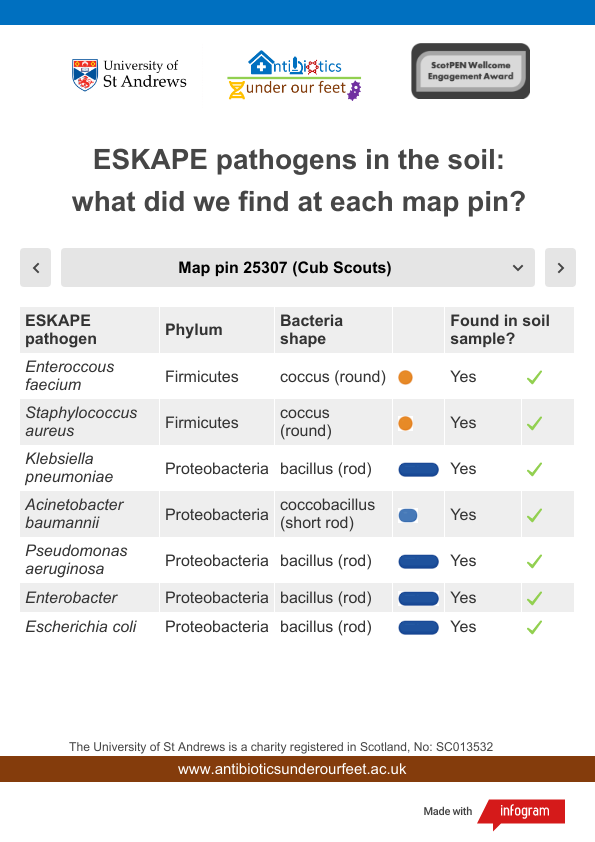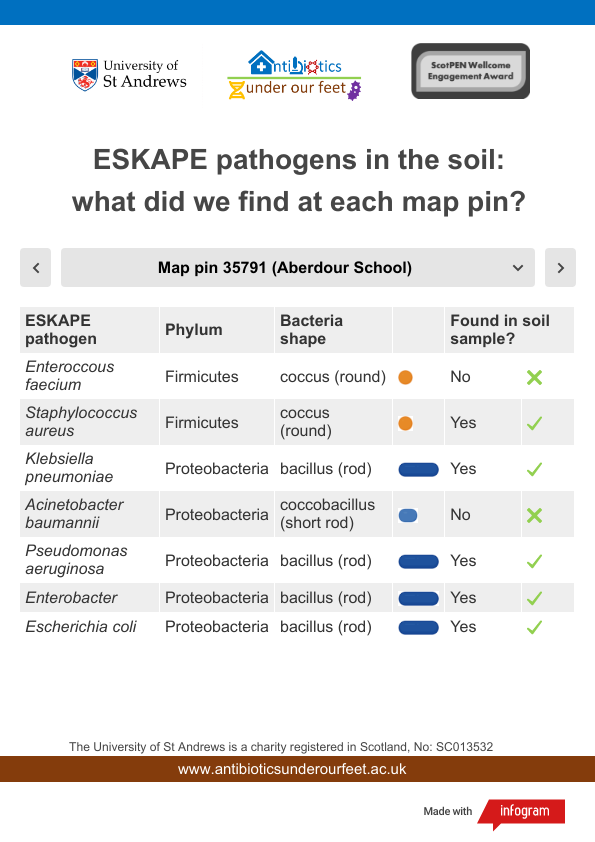The World Health Organisation has a list of bacteria for which new antibiotics are urgently needed. Because we are searching for new molecules to be used as antimicrobial medicines, our researchers are very interested in the ESKAPE pathogens and finding them in soil samples. A pathogen is a microbe that causes disease. ESKAPE pathogens are a global concern.
The ESKAPE pathogens are six potentially harmful types of bacteria that can “escape” from the effects of antibiotic treatment of infections making them antibiotic resistant. Finding them in a soil sample isn’t a cause for concern by itself as many of these bacteria are found in all sorts of places (don’t panic)!

The name of ESKAPE comes from the names of the bacteria:
Enterococcus faecium, Staphylococcus aureus, Klebsiella pneumoniae, Acinetobacter baumannii, Pseudomonas aeruginosa and Enterobacter species (including Escherichia coli).
Explore the tables to below to find out which phylum each ESKAPE pathogen is from and what shape it is.

Use the tables to investigate which of the ESKAPE pathogens were found in each soil samples.







We have just given data for whether each bacteria was found or not found in the soil sample. In all samples, these bacteria were found in very, very, very tiny amounts. Thank you to one of our Nuffield Research Placement students, Mia, for updating our results!
More information about the ESKAPE pathogens is given in the links below thanks to our University of St Andrews STEP 2022 team of undergraduate students who have been writing and editing Simple Wikipedia articles for microbes relevant to our project.
Enterococcus faecium (Simple English Wikipedia, the free encyclopedia)
Staphylococcus aureus (Simple English Wikipedia, the free encyclopedia)
Klebsiella pneumoniae (Simple English Wikipedia, the free encyclopedia)
Acinetobacter baumannii (Simple English Wikipedia, the free encyclopedia)
Pseudomonas aeruginosa (Simple English Wikipedia, the free encyclopedia)
Enterobacter (Simple English Wikipedia, the free encyclopedia)
Results dataset available

